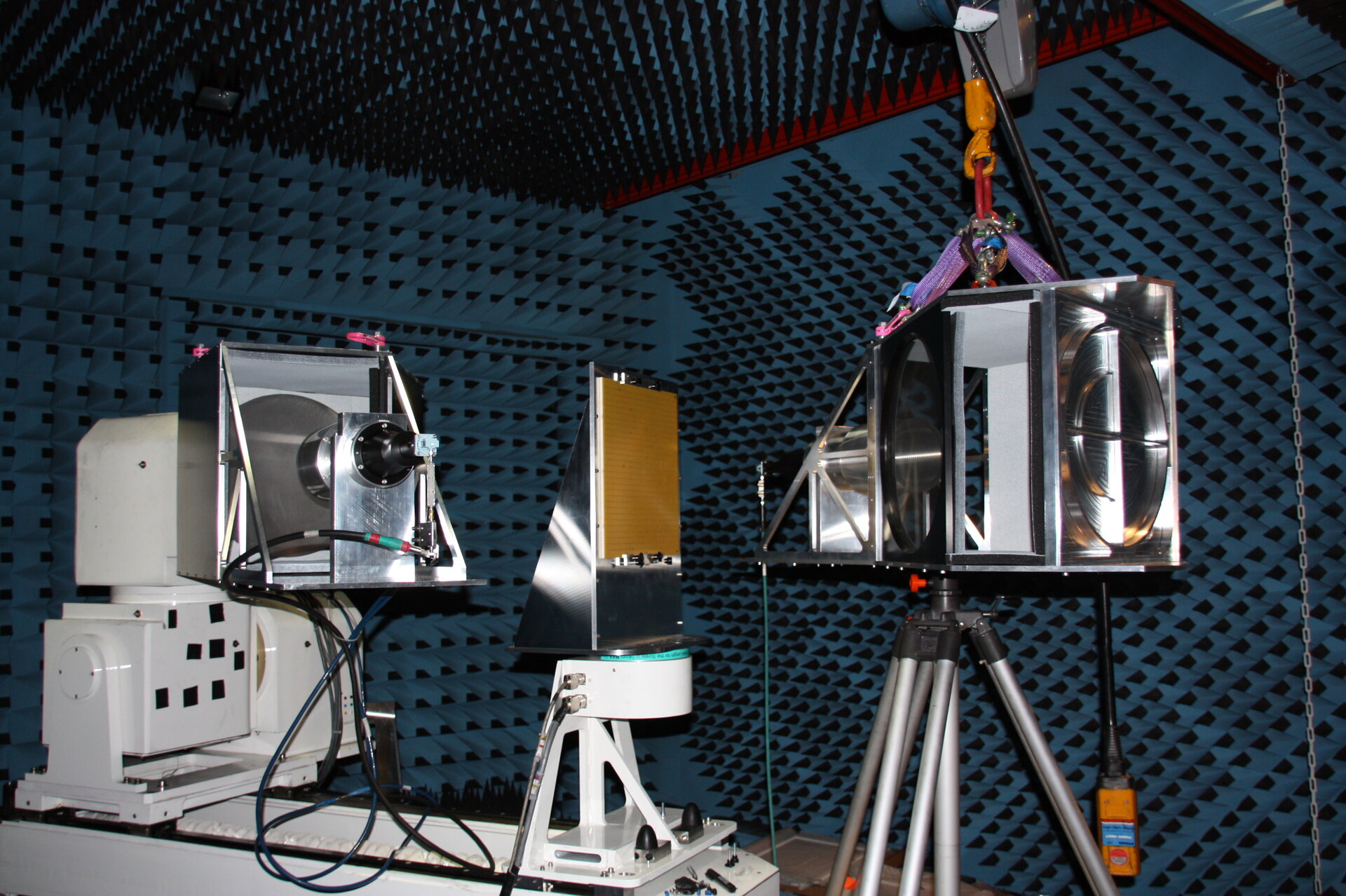What kind of testing does the Antenna Test Facilities do?
The complementary nature of the Antenna Testing Facilities allow them to support the entire process of antenna development from the early design stages up to right before launch.
The Microwave and (sub)mm-wave RF Material Characterization Laboratory allows characterising, at a very early design stage, the RF proprieties of materials when developing new antenna technologies. Parameters such as complex refractive index (and thus dielectric constant and dispersion losses) are extracted from RF measurements of polymers, ceramics and foams, materials widely used in space and ground antennas. In addition, the Laboratory can also characterise the RF losses in reflective surfaces, critical in high frequency radio based instruments for space science and Earth observation. These parameters can be measured very accurately across a very broad range of frequencies, allowing high fidelity designs in turn boosting the competitiveness of the European space sector in international markets.
The two anechoic chambers, the CATR and Hertz, enable accurate verification of radiating structures, payloads and complete satellites, from early design stages, up to final performance testing right before shipping the satellite to the launch site. Radio waves are EM radiation just like visible light, and they behave in the same way. Many antennas are designed to focus radiation into a main beam in the same way as a flashlight does. The main beam must achieve the designed concentration and pointing direction.
Tests are performed on individual antennas as well as antennas integrated with other antennas or subsystems. Testing the antennas integrated in the complete satellite structure is often the only way to ensure that the spacecraft is equipped with a compliant and reliable antenna (and communication) subsystem as the high number of antennas and deployable appendixes featured in modern satellites can cause unwanted interference when operated together.
In addition to testing antennas and payloads, the Antenna Testing Facilities are also used to investigate the feasibility of new types of measurement tools and techniques, often liaising with external industrial antenna laboratories and the antenna measurements and electromagnetics scientific communities.





